Numerical Study of Noise Barriers’ Side Edge Effects on Pollutant Dispersion near Roadside under Various Thermal Stability Conditions
Abstract
:1. Introduction
2. Materials and Methods
3. Results
3.1. Model Validation
3.2. Numerical Analysis of Barrier Edge Effect under Neutral Condition
Flow Characteristics Comparison between Edge Effects and Non-Edge Effects
3.3. Pollutant Dispersion Characteristics under Neutral Condition
3.4. Barrier Edge Effect under Various Thermal Conditions
4. Discussion
Author Contributions
Funding
Conflicts of Interest
References
- Pressbooks. Available online: https://ohiostate.pressbooks.pub/sciencebites/chapter/causes-and-consequences-of-air-pollution-in-beijing-china/ (accessed on 1 May 2018).
- EPA. Available online: https://www.epa.gov/newsreleases/us-epa-partners-study-roadside-vegetation-and-air-quality-local-school (accessed on 1 May 2018).
- EPA. Available online: https://www.epa.gov/sites/production/files/2015-10/documents/ochp_2015_near_road_pollution_booklet_v16_508.pdf (accessed on 1 May 2018).
- Heist, D.K.; Perry, S.G.; Brixey, L.A. A wind tunnel study of roadway configurations on the dispersion of traffic-related pollution. Atmos. Environ. 2009, 43, 5101–5111. [Google Scholar] [CrossRef]
- Baldauf, R.; Thoma, E.; Khlystov, A.; Isakov, V.; Bowker, G.; Long, T.; Snow, R. Impacts of noise barriers on near-road air quality. Atmos. Environ. 2008, 42, 7502–7507. [Google Scholar] [CrossRef] [Green Version]
- Ning, Z.; Huddaa, N.; Dahera, N.; Kam, W.; Herner, J.; Kozawa, K.; Mara, S.; Sioutas, C. Impact of roadside noise barriers on particle size distributions and pollutants concentrations near freeways. Atmos. Environ. 2010, 44, 3118–3127. [Google Scholar] [CrossRef]
- Hagler, G.S.W.; Lin, M.Y.; Khlystov, A.; Baldauf, R.W.; Iskov, V.; Faircloth, J.; Jackson, L.E. Field investigation of roadside vegetative and structural barrier impact on near-road ultrafine particle concentrations under a variety of wind conditions. Sci. Total Environ. 2012, 419, 7–15. [Google Scholar] [CrossRef] [PubMed]
- Finn, D.; Clawson, K.L.; Roger, R.G.; Rich, J.D.; Eckman, R.M. Tracer studies to characterize the effects of roadside noise barriers on near-road pollutant dispersion under varying atmospheric stability conditions. Atmos. Environ. 2010, 44, 204–214. [Google Scholar] [CrossRef]
- RBaldauf, W.; Iskov, V.; Deshmarkh, P.; Venkatram, A.; Yang, B.; Zhang, K.M. Influence of solid noise barriers on near-road and on-road air quality. Atmos. Environ. 2016, 129, 265–276. [Google Scholar] [CrossRef] [Green Version]
- Hagler, G.S.W.; Tang, W.; Freeman, M.J.; Heist, D.K.; Perry, S.J.; Vette, A.F. Model evaluation of roadside barrier impact on near-road air pollution. Atmos. Environ. 2011, 45, 2522–2530. [Google Scholar] [CrossRef]
- Schulte, N.; Snyder, M.; Isacov, V.; Heist, D.; Venkatram, A. Effects of solid barriers on dispersion of roadway emissions. Atmos. Environ. 2014, 97, 286–295. [Google Scholar] [CrossRef]
- Lee, E.S.; Ranasinghe, D.R.; Ahangar, F.E.; Amini, S.; Mara, S.; Choi, W.; Paulson, S.; Zhu, Y. Field evaluation of vegetation and noise barriers for mitigation of near-freeway air pollution under variable wind conditions. Atmos. Environ. 2018, 175, 92–99. [Google Scholar] [CrossRef]
- Amini, S.; Ahangar, F.; Heist, D.; Perry, S.; Venkatram, A. Modeling Dispersion of Emissions from Depressed Roadways. Atmos. Environ. 2018, 186, 189–197. [Google Scholar] [CrossRef]
- Steffens, J.T.; Heist, D.K.; Perry, S.G.; Zhang, K.M. Modeling the effects of a solid barrier on pollutant dispersion under various atmospheric stability conditions. Atmos. Environ. 2013, 69, 76–85. [Google Scholar] [CrossRef]
- ANSYS. 14.1.1 Species Transport Equation. In ANSYS FLUENT 18.1 Theory Guide; ANSYS, Inc.: Canonsburg, PA, USA, 2017. [Google Scholar]
- Pieterse, J.E.; Harms, T.M. CFD investigation of atmospheric boundary layer under different thermal stabilities conditions. J. Wind Energy Ind. Aerodyn. 2013, 121, 82–97. [Google Scholar] [CrossRef]
- Alinot, C.; Masson, C. Aerodynamic Simulations of Wind Turbine Operating in Atmospheric Boundary layer with Various Thermal Stratifications. In Proceedings of the 2002 ASME Wind Energy Symposium, Reno, NV, USA, 14–17 January 2002. [Google Scholar]
- Executive Summary. Light-Duty Automotive Technology, Carbon Dioxide Emissions, and Fuel Economy Trends: 1975 Through 2017; EPA, EPA-420-S-18-001; EPA: Washington, DC, USA, January 2018. [Google Scholar]
- ANSYS. 17.5 Eulerian Model. In ANSYS FLUENT 18.1 Theory Guide; ANSYS, Inc.: Canonsburg, PA, USA, 2017. [Google Scholar]
- Hussian, M.; Lee, B.E. An Investigation of Wind Forces on Three-Dimensional Roughness Elements in a Simulated Atmospheric Boundary Layer Flow. Part II: Flow over Large Arrays of Identical Roughness Elements and the Effect of Frontal and Side Aspect Ratio Variants; University of Sheffield Department of Building Science Rep. BS-56; University of Sheffield: Sheffield, UK, 1980; 81p. [Google Scholar]
- Abkar, M.; Porte-Agel, F. Influence of Atmospheric Stability on Wind-Turbine Wakes: A Large-Eddy Simulation Study. AIP Phys. Fluids 2015, 27, 035104. [Google Scholar] [CrossRef]
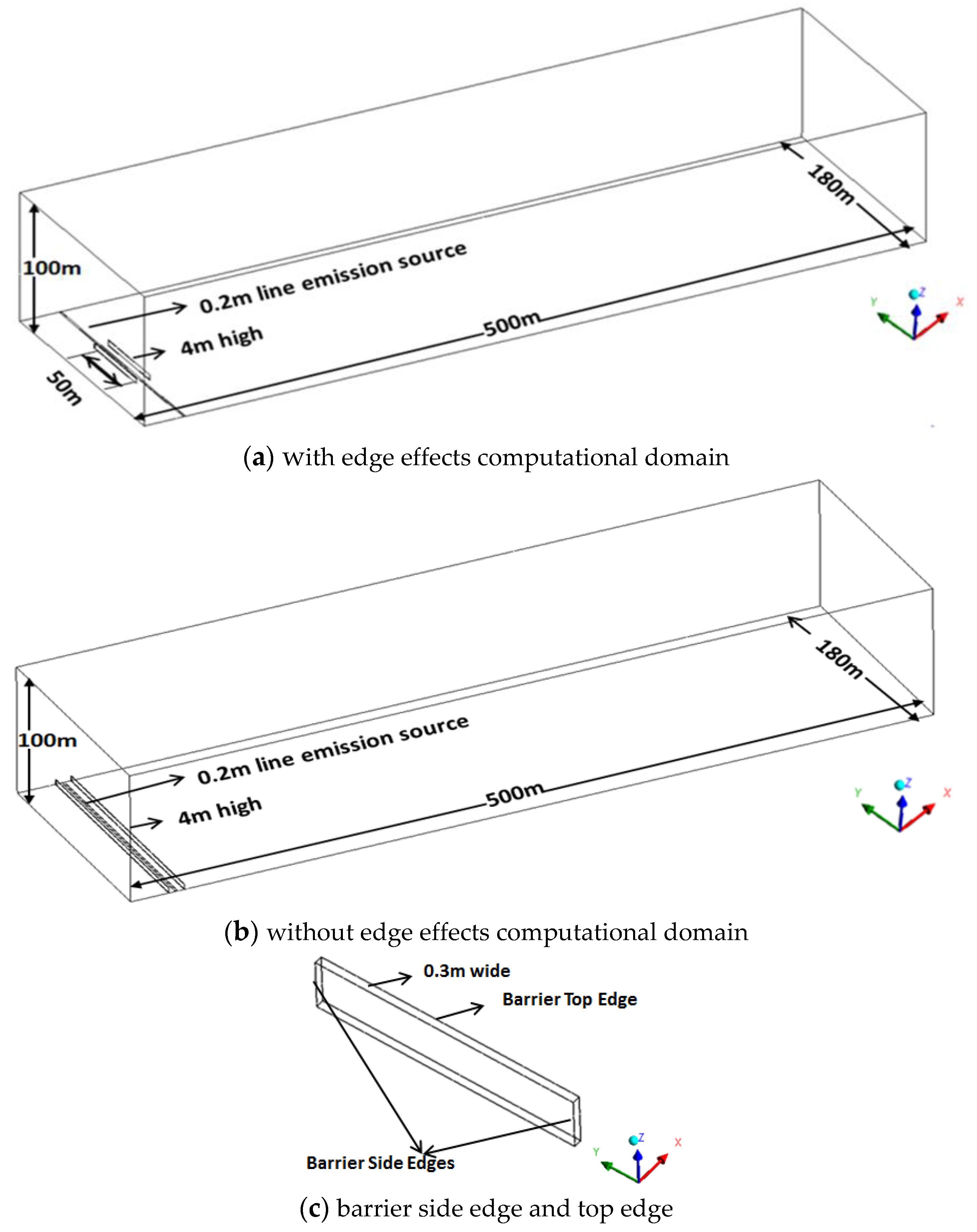
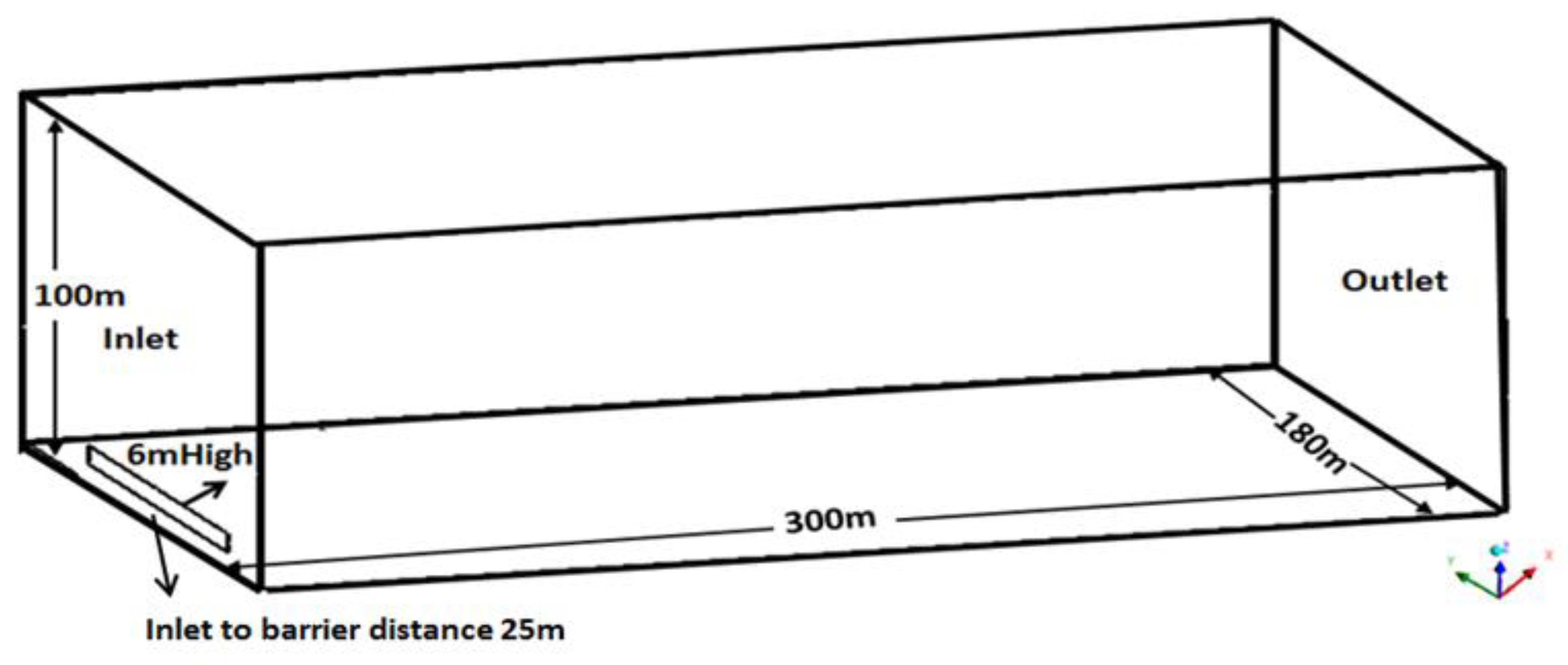
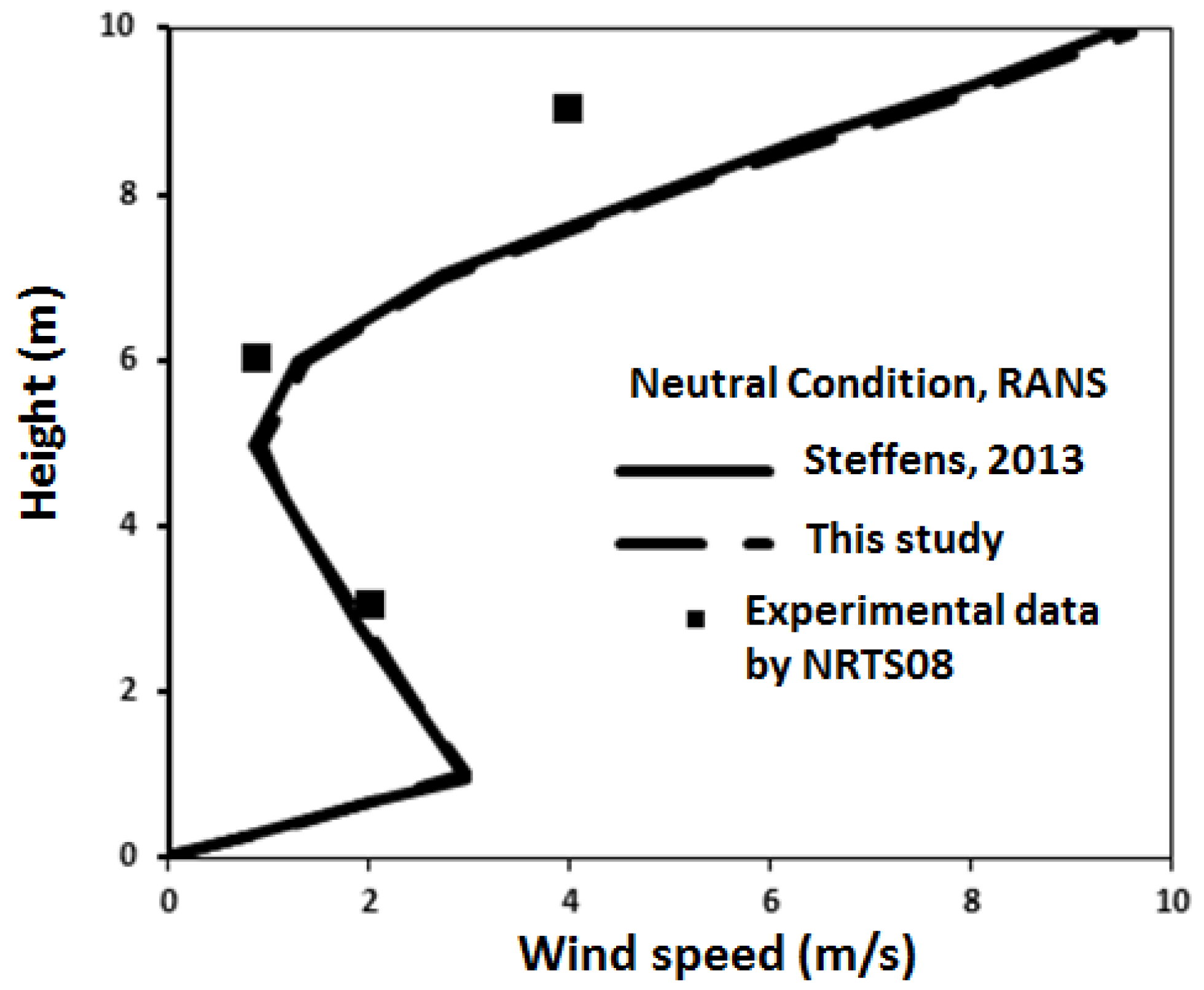
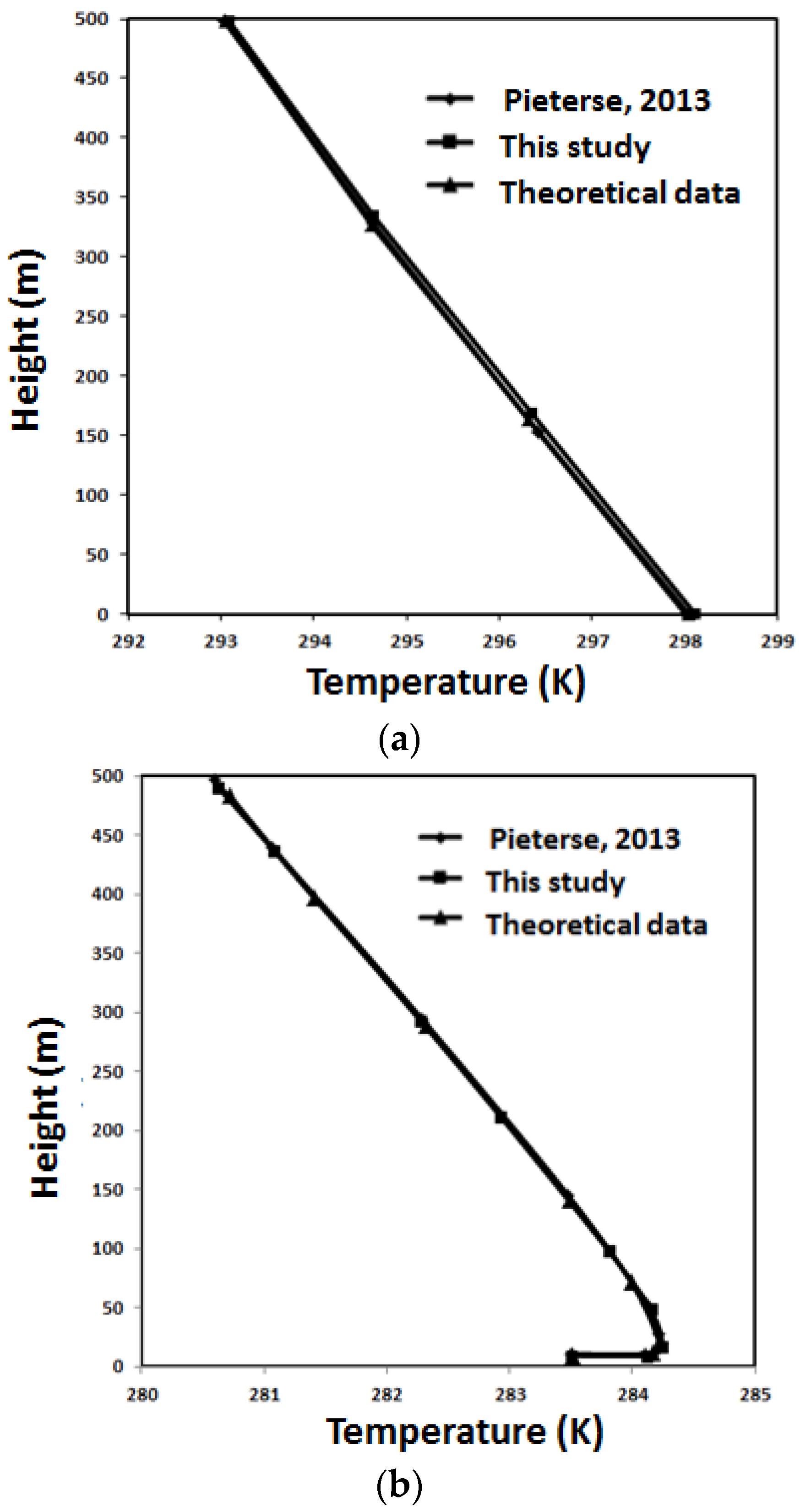
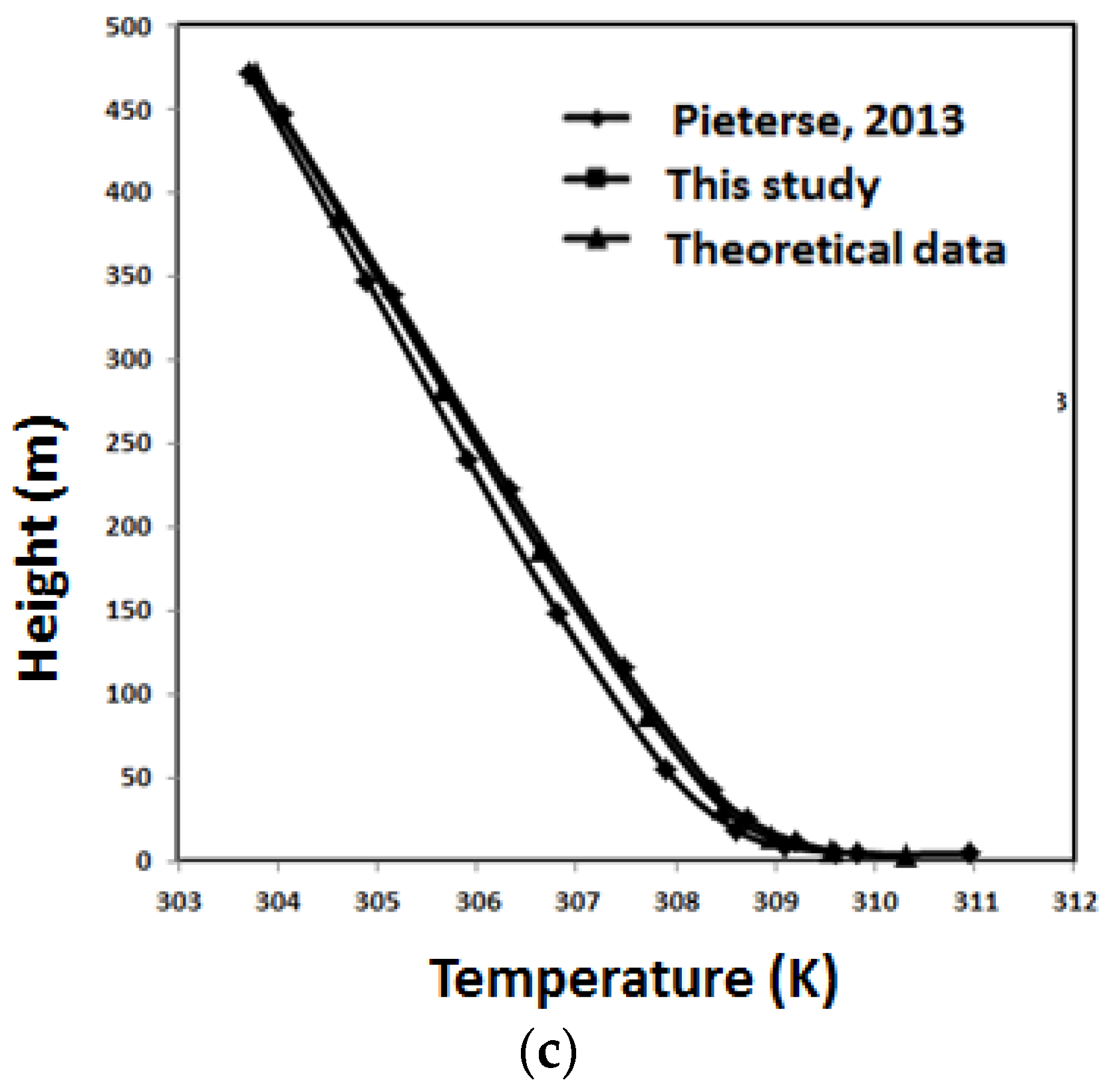
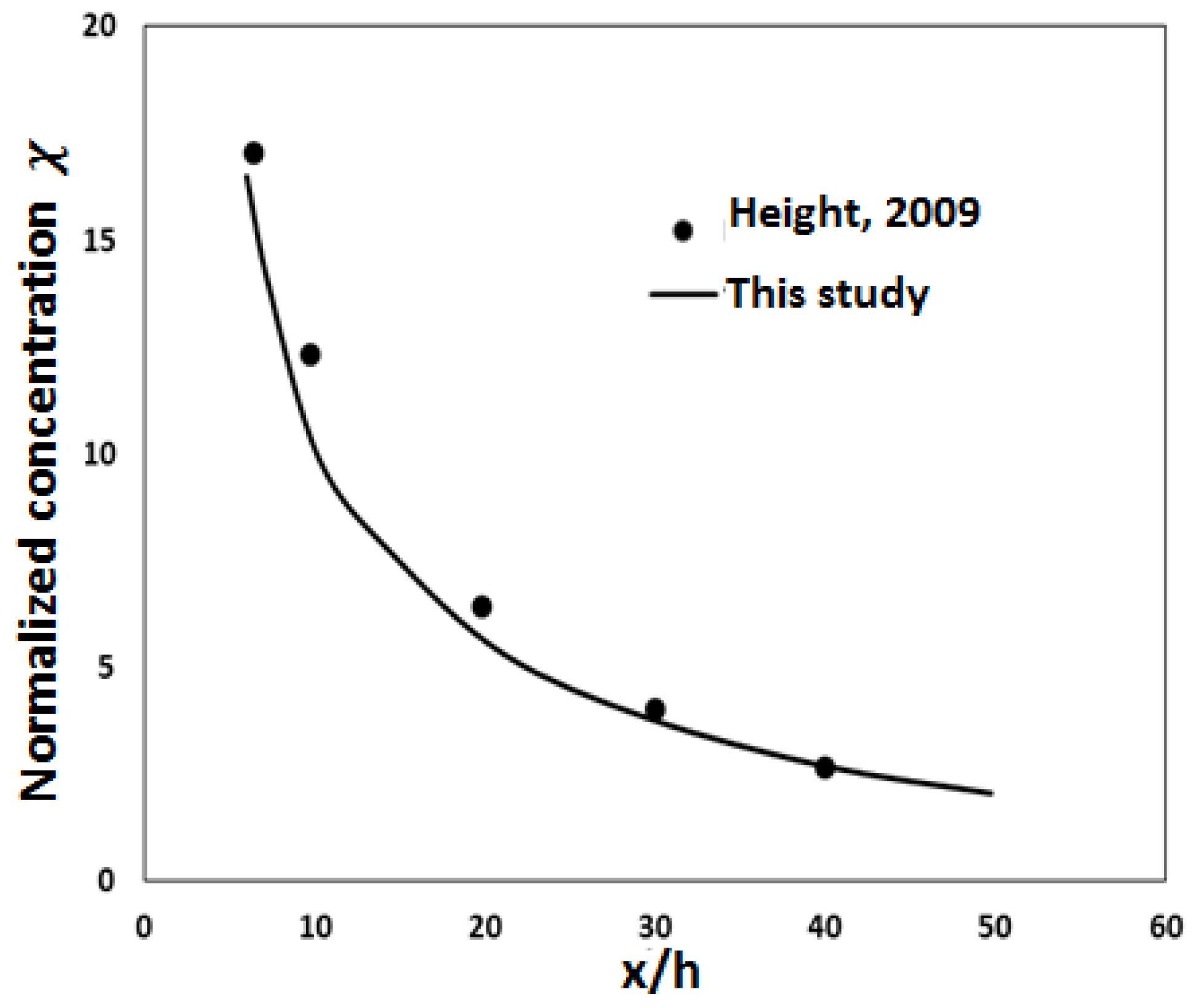
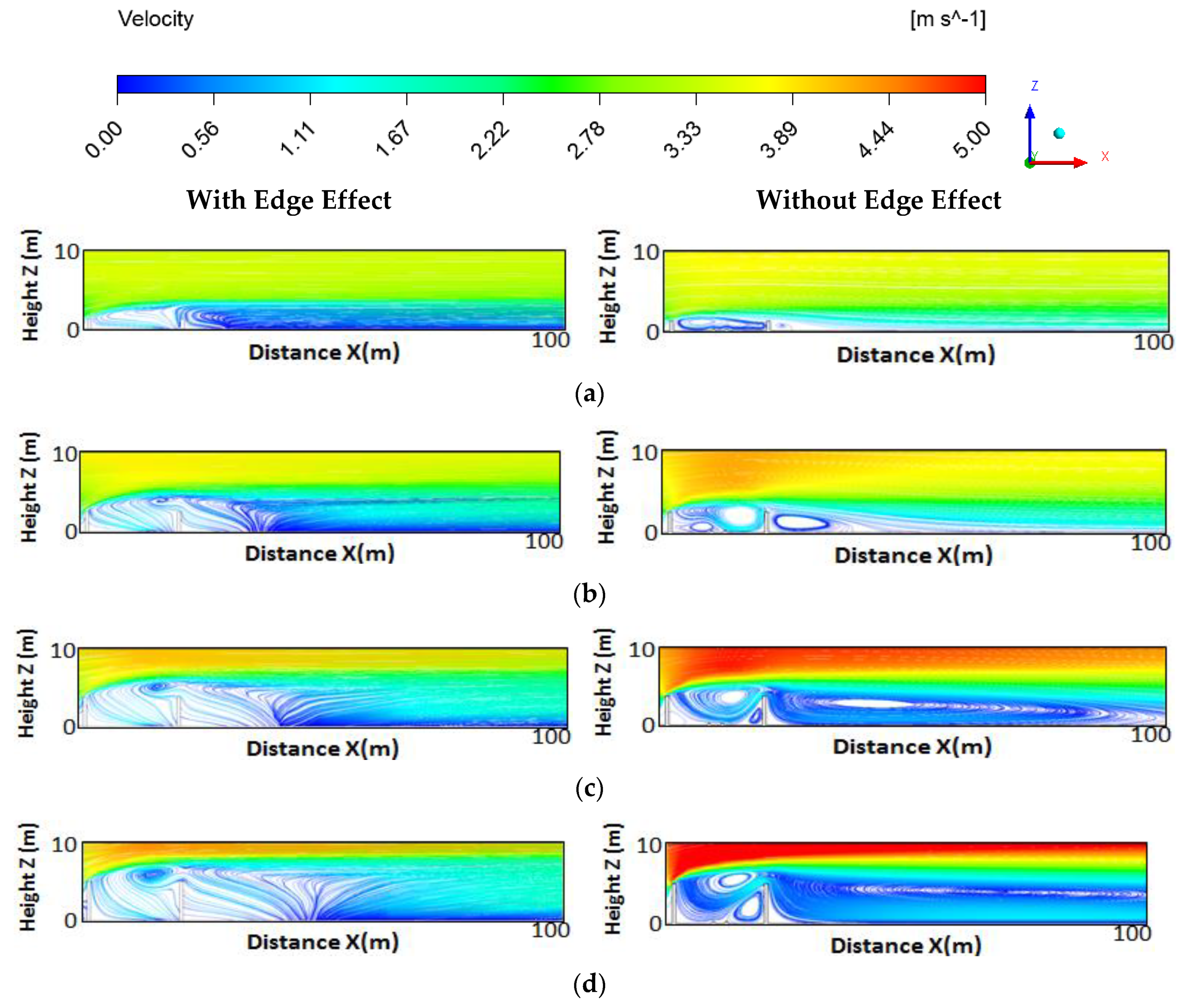
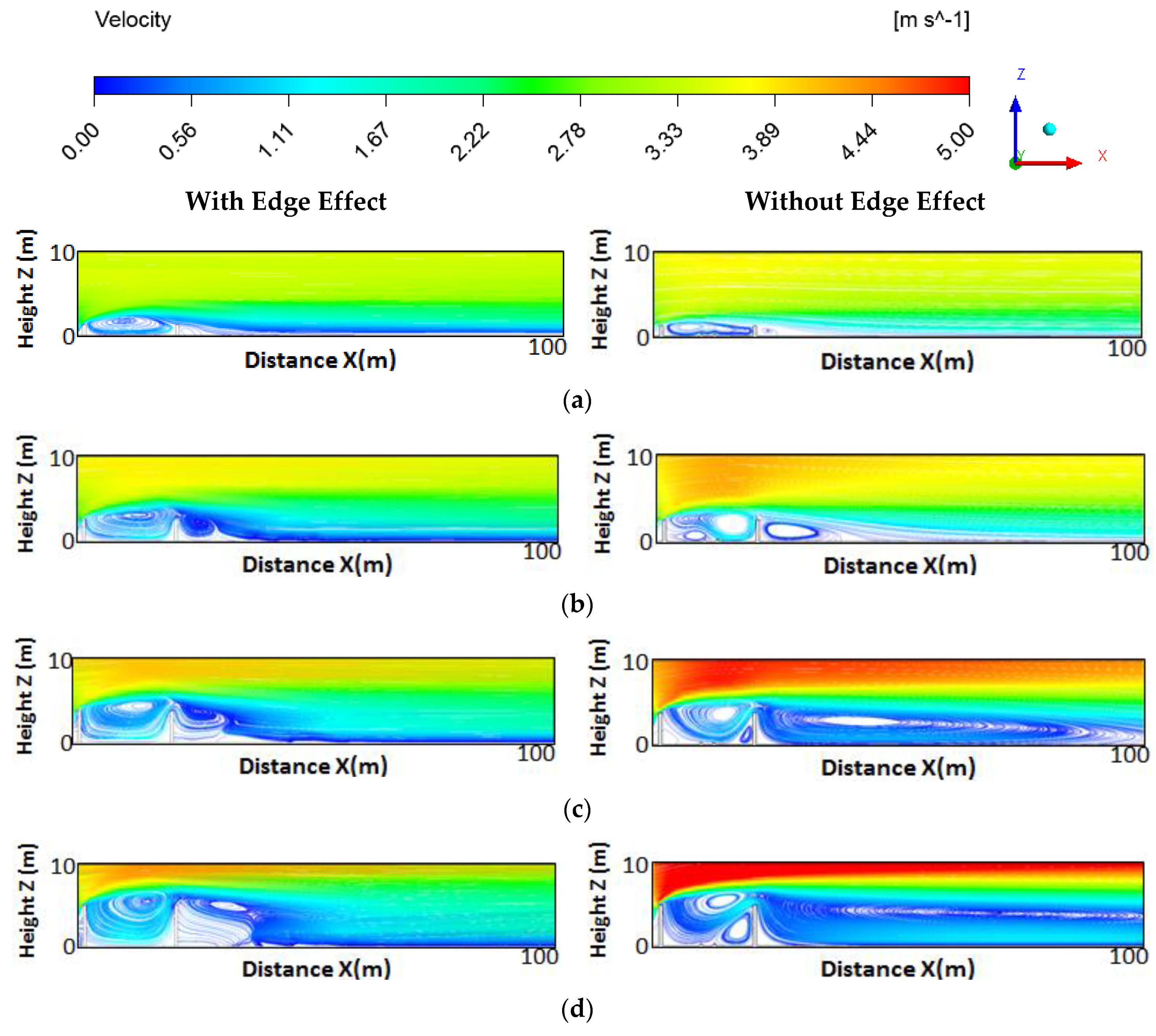
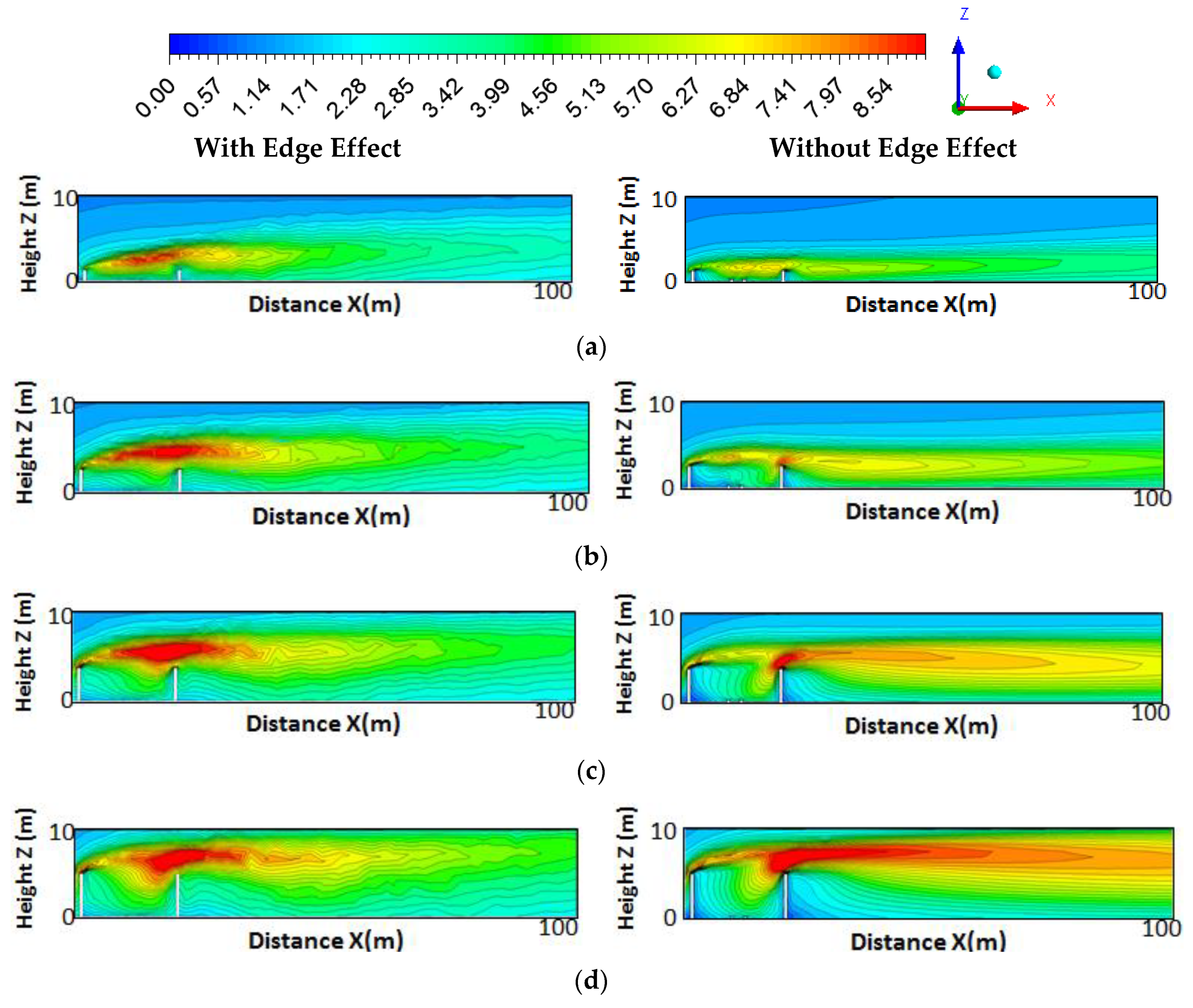
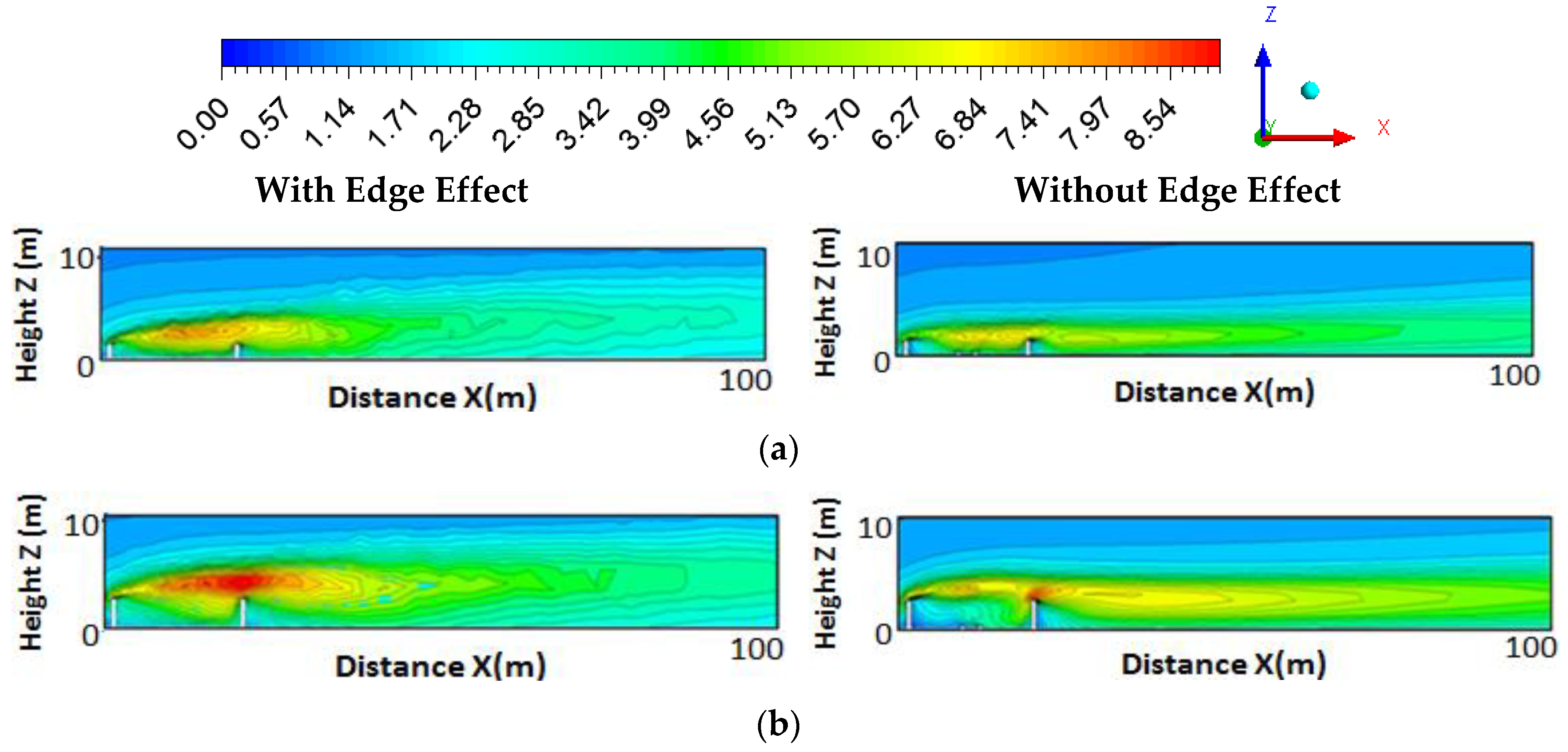
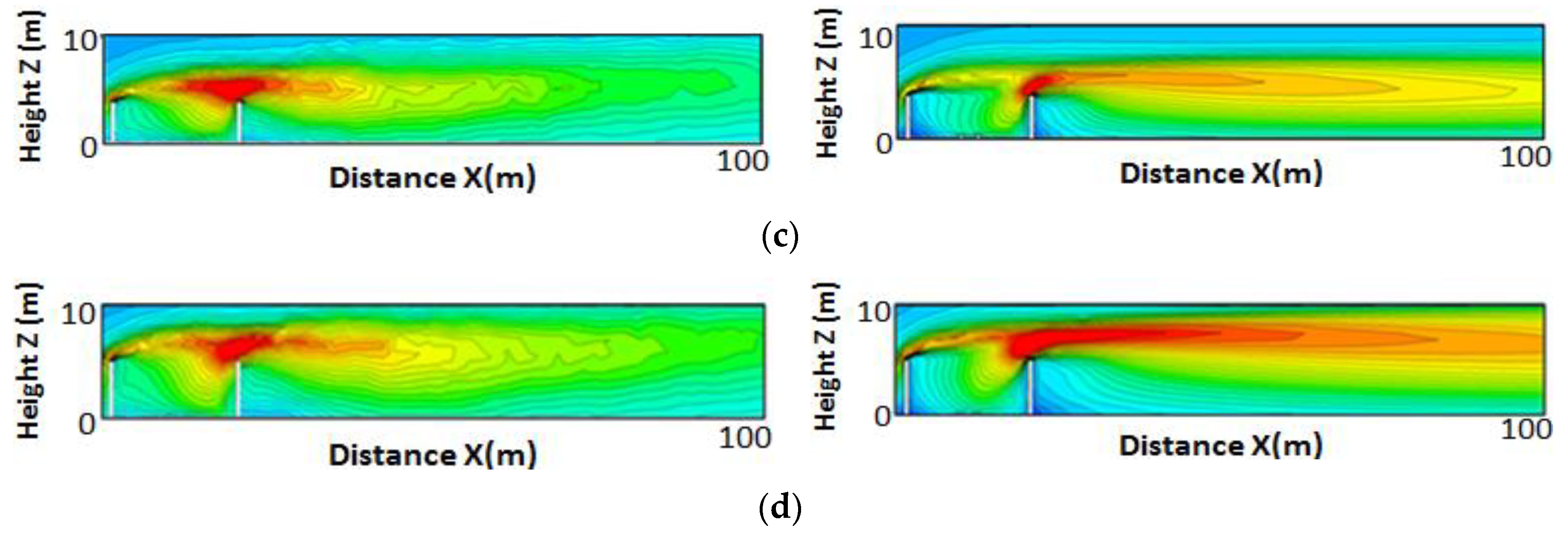
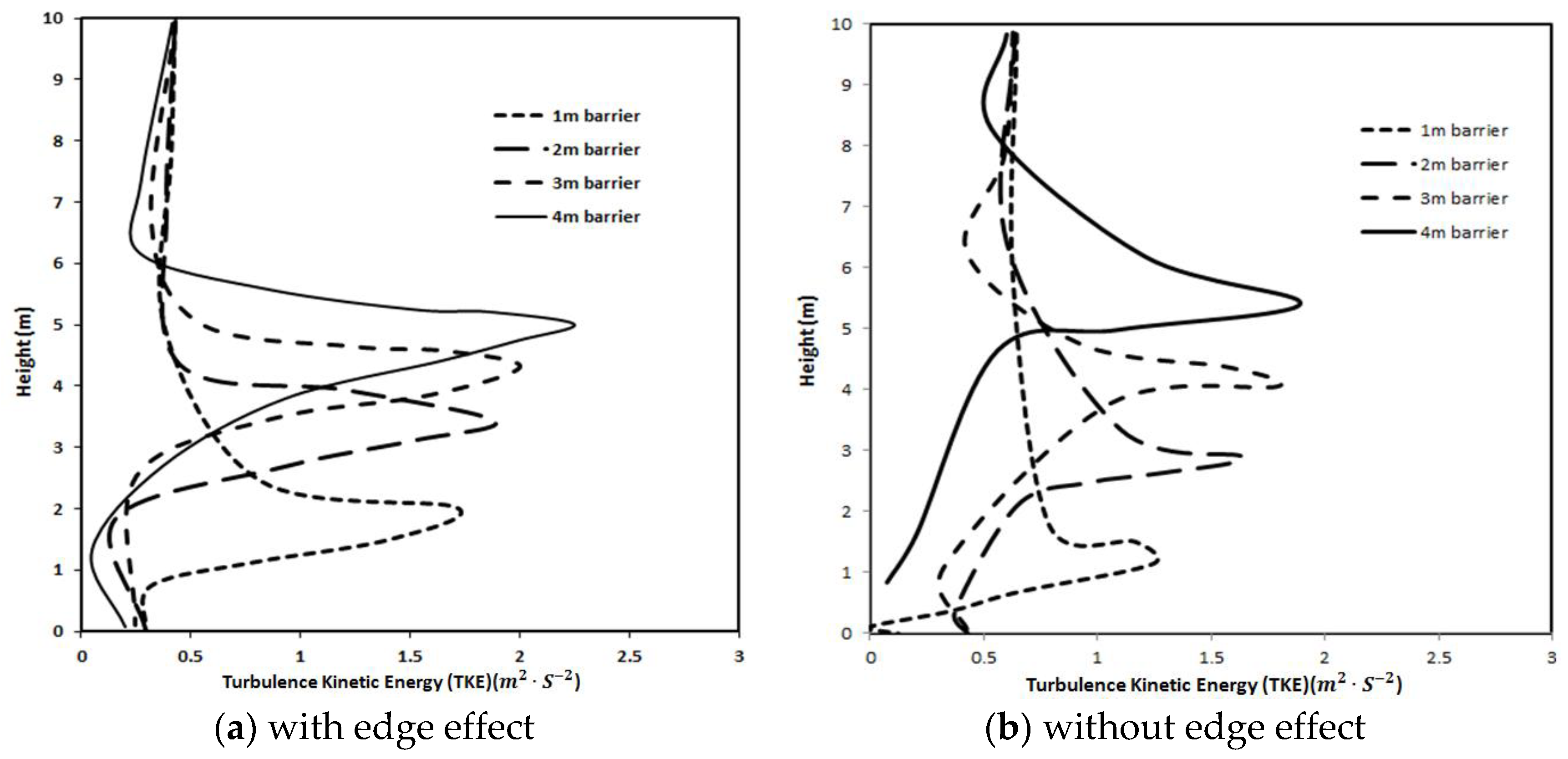
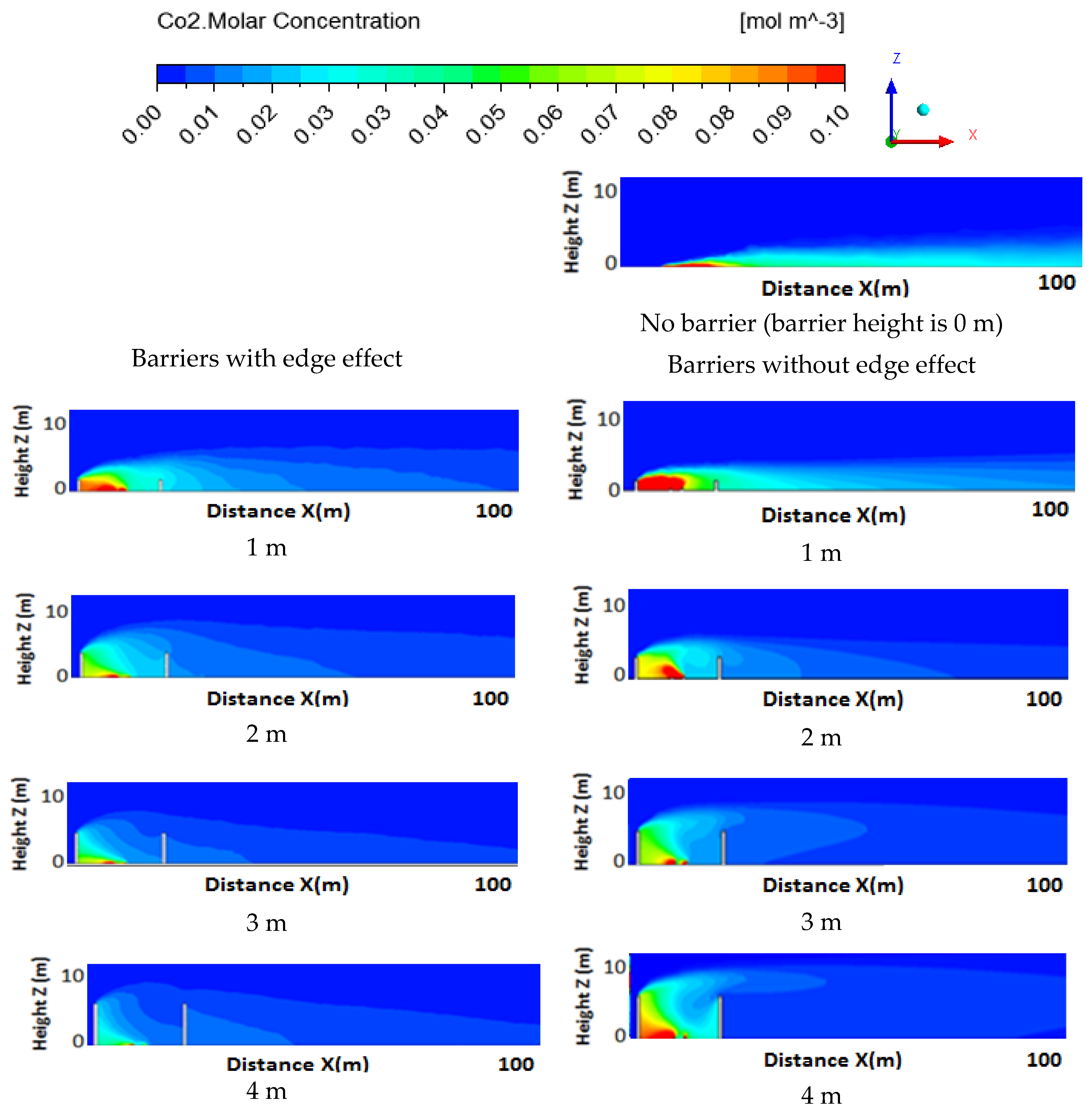
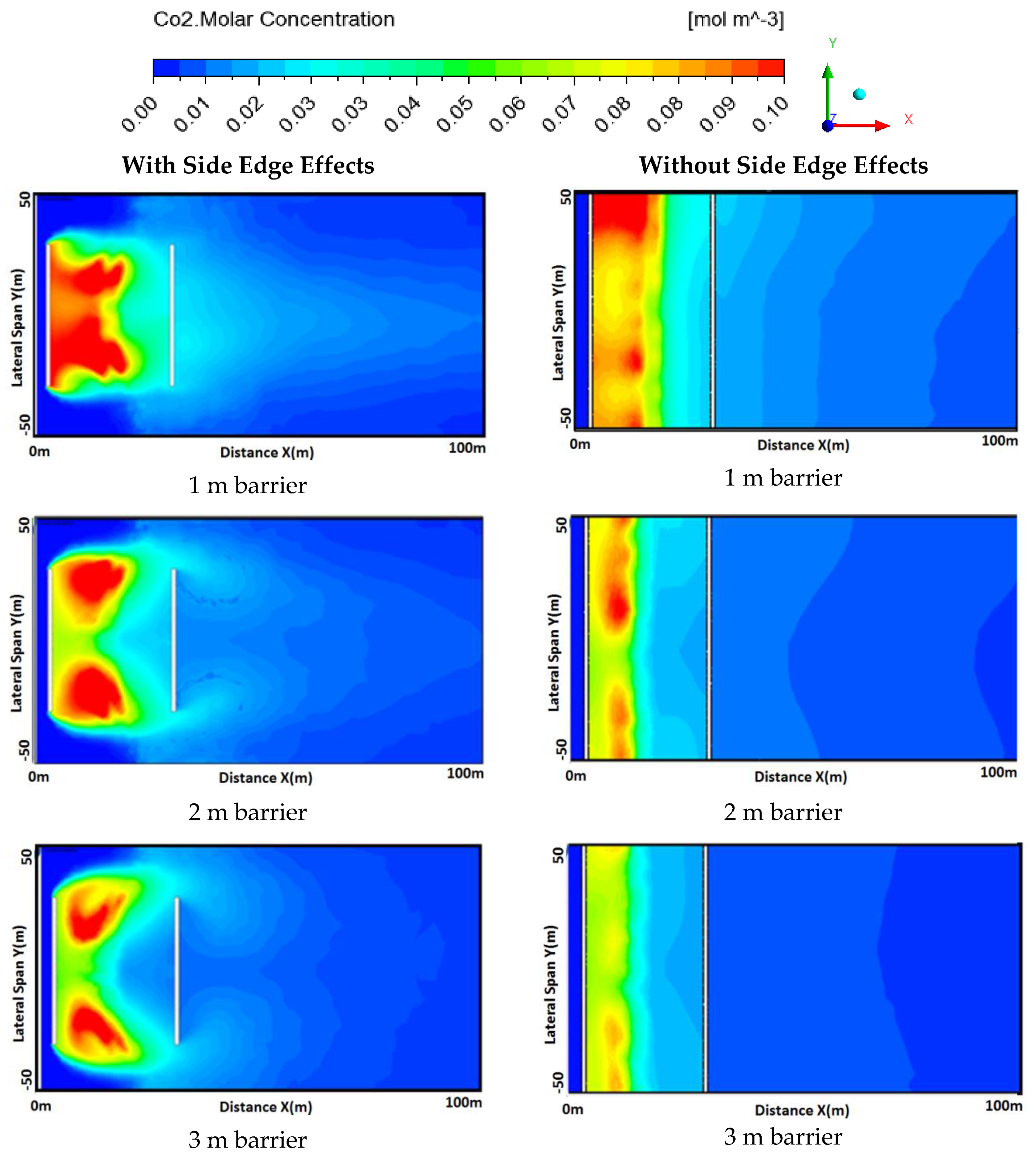

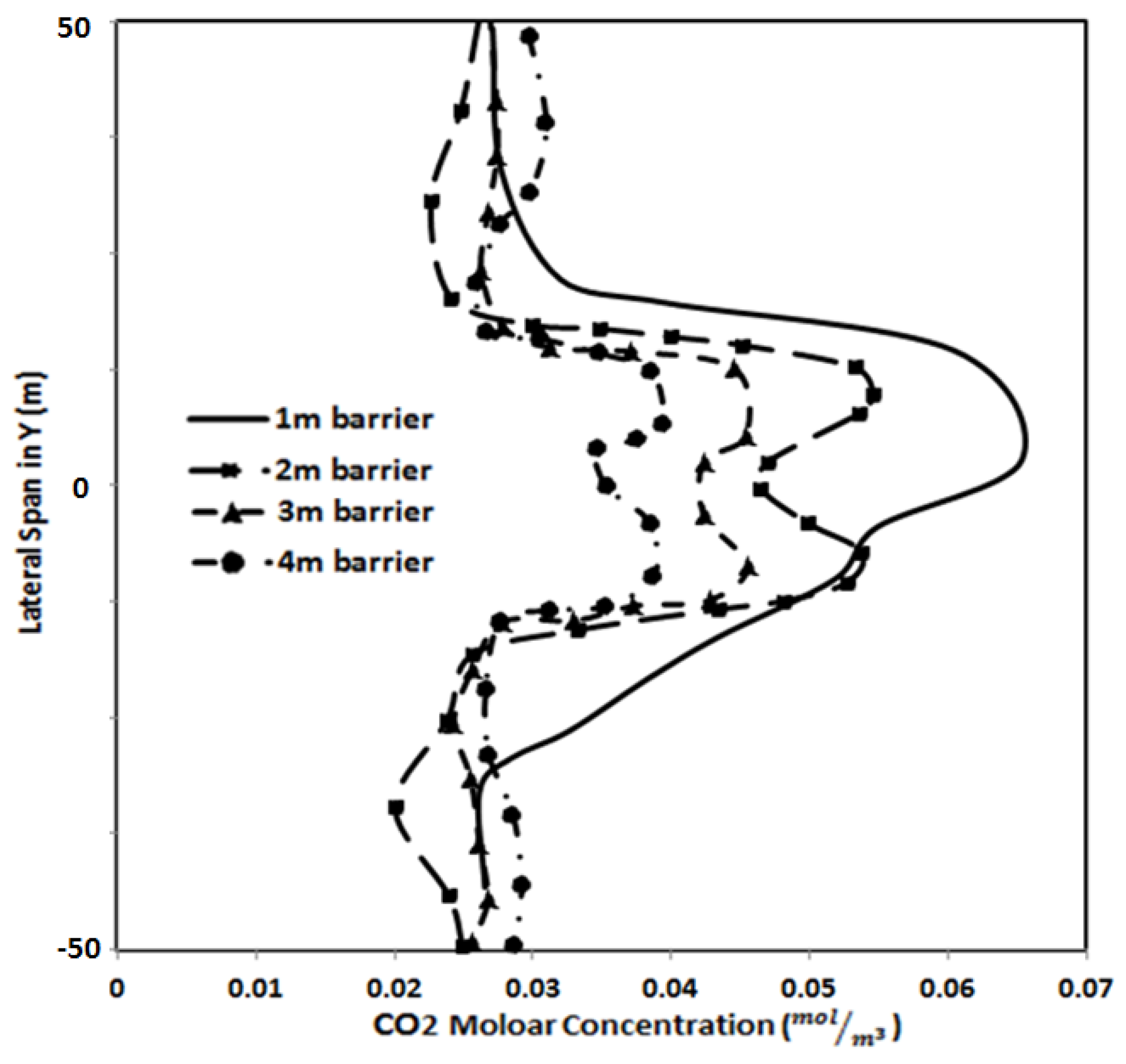
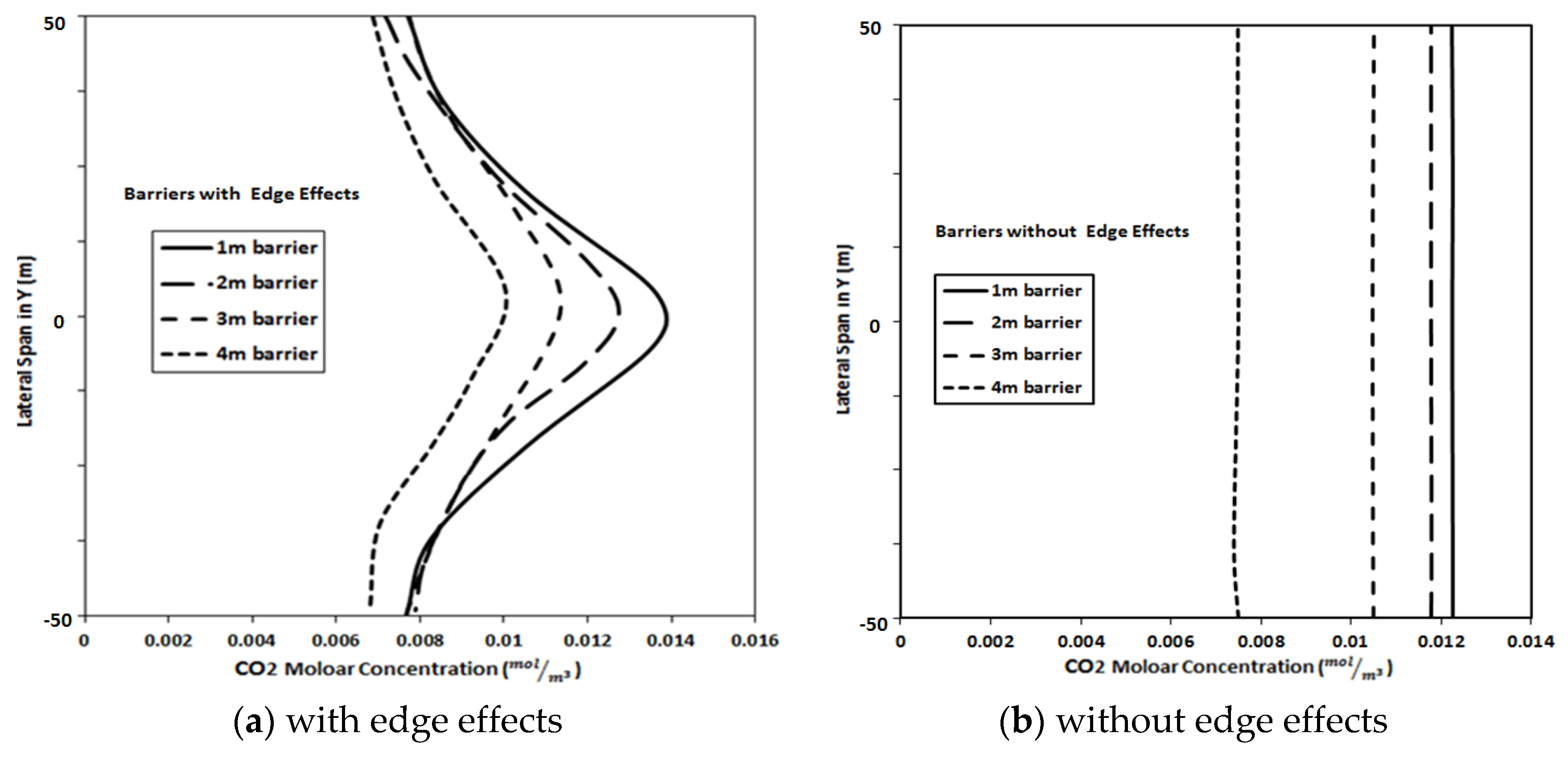
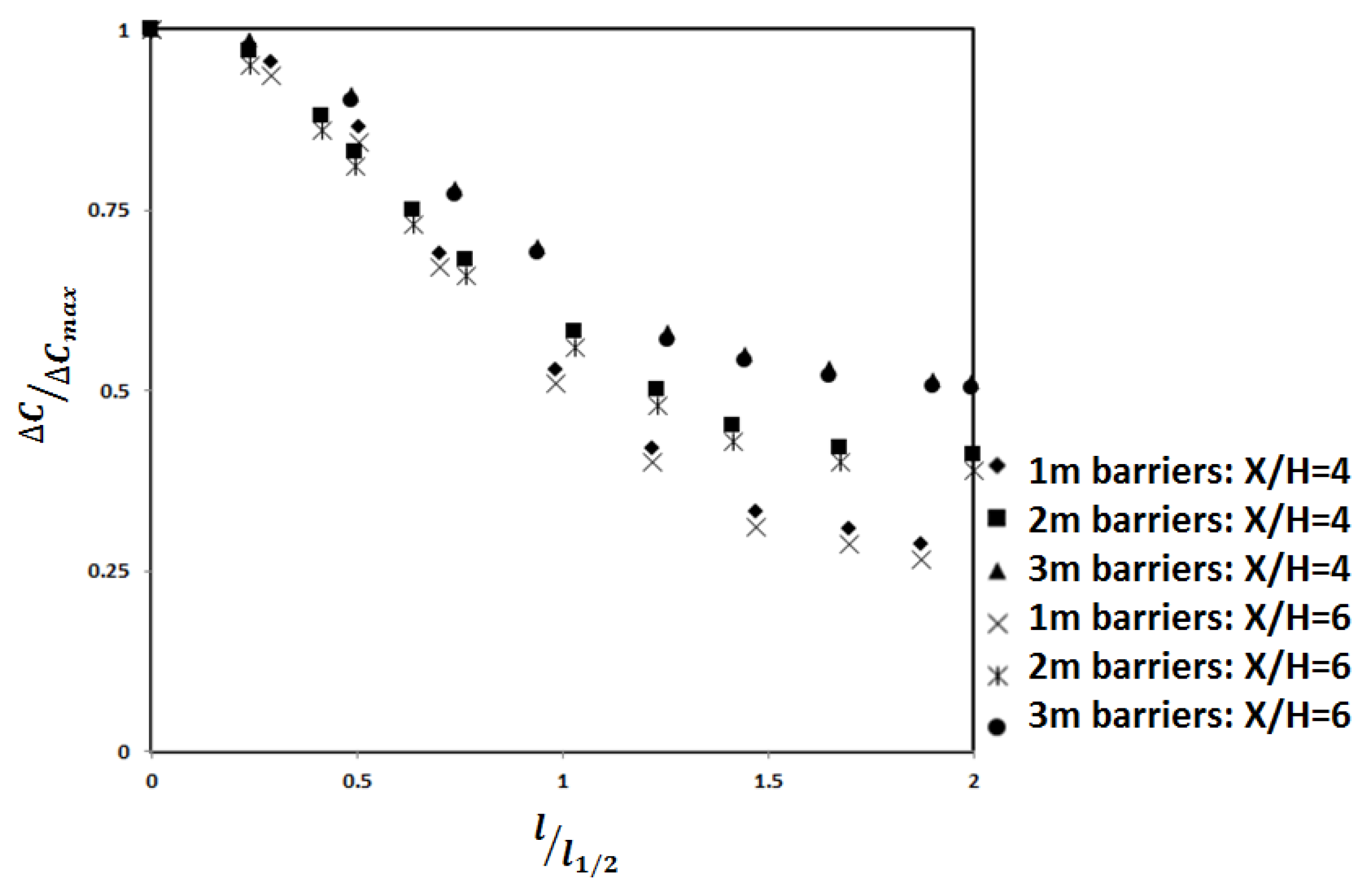
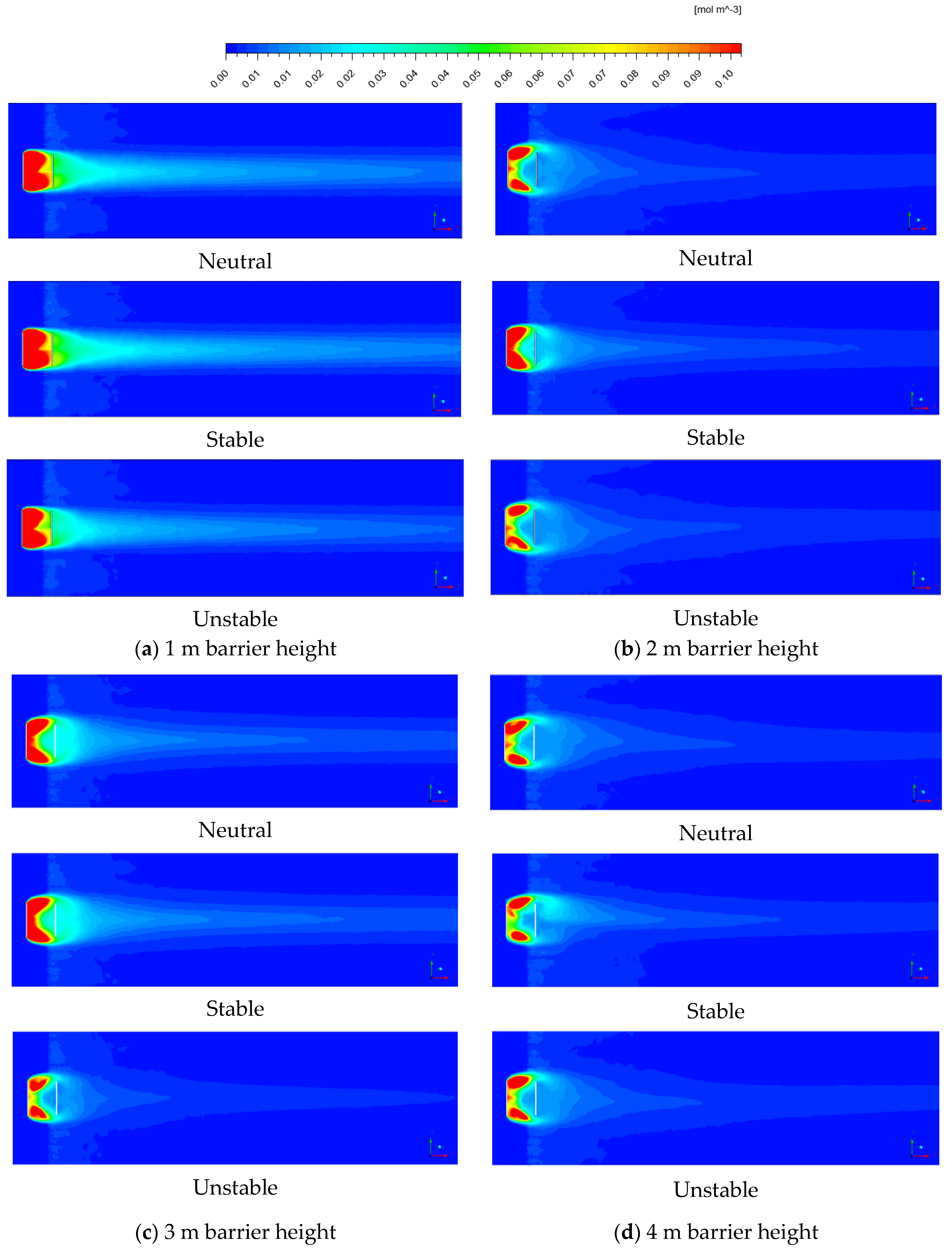
| Boundary | Boundary Type | Profiles |
|---|---|---|
| Inlet | Velocity Inlet | Numerical Inlet UDF |
| Temperature Inlet: Neutral UDF | ||
| Outlet | Outflow | Outflow with backflow rate = 1 |
| Top | Slip Moving Wall | Non-Shear Stress |
| Bottom | No Slip Wall | Roughness Height: 0.25 |
| Roughness Constant: 0.25 | ||
| Source | Mass Flow Inlet | Mass Flow Rate = 0.006 kg/s, |
| Direction Normal to Boundary | ||
| Barriers | No Slip Wall | Roughness Height: 0 |
| Roughness Constant: 0.25 |
| Barrier with Edge Effects | Barrier without Edge Effects | ||
|---|---|---|---|
| Barrier Height (m) | |||
| 1 | 1.70 | 1.25 | |
| 2 | 1.96 | 1.56 | |
| 3 | 2.00 | 1.86 | |
| 4 | 2.30 | 1.98 | |
© 2018 by the authors. Licensee MDPI, Basel, Switzerland. This article is an open access article distributed under the terms and conditions of the Creative Commons Attribution (CC BY) license (http://creativecommons.org/licenses/by/4.0/).
Share and Cite
Gong, L.; Wang, X. Numerical Study of Noise Barriers’ Side Edge Effects on Pollutant Dispersion near Roadside under Various Thermal Stability Conditions. Fluids 2018, 3, 105. https://doi.org/10.3390/fluids3040105
Gong L, Wang X. Numerical Study of Noise Barriers’ Side Edge Effects on Pollutant Dispersion near Roadside under Various Thermal Stability Conditions. Fluids. 2018; 3(4):105. https://doi.org/10.3390/fluids3040105
Chicago/Turabian StyleGong, Liyuan, and Xiuling Wang. 2018. "Numerical Study of Noise Barriers’ Side Edge Effects on Pollutant Dispersion near Roadside under Various Thermal Stability Conditions" Fluids 3, no. 4: 105. https://doi.org/10.3390/fluids3040105
APA StyleGong, L., & Wang, X. (2018). Numerical Study of Noise Barriers’ Side Edge Effects on Pollutant Dispersion near Roadside under Various Thermal Stability Conditions. Fluids, 3(4), 105. https://doi.org/10.3390/fluids3040105




